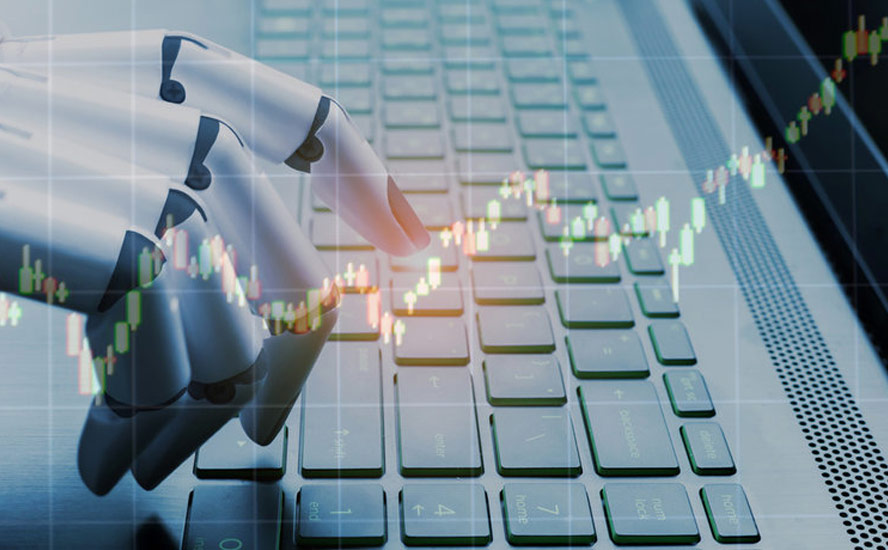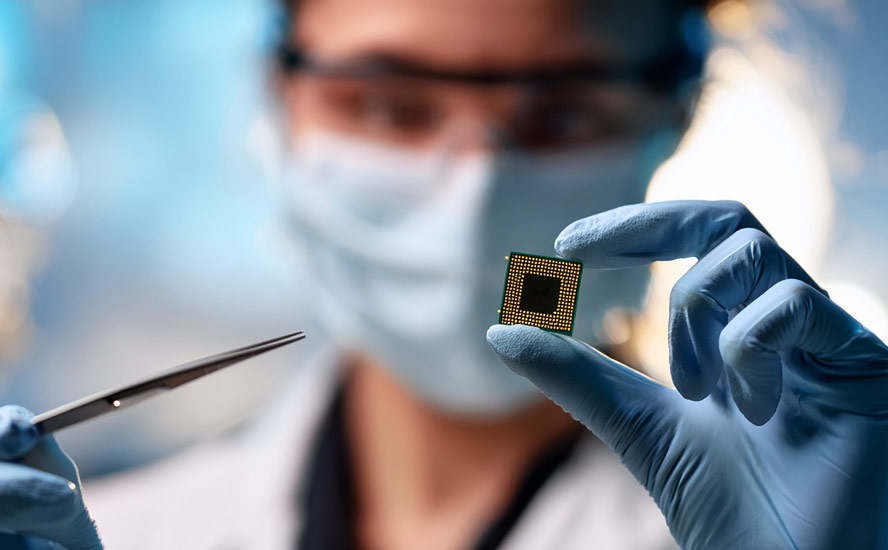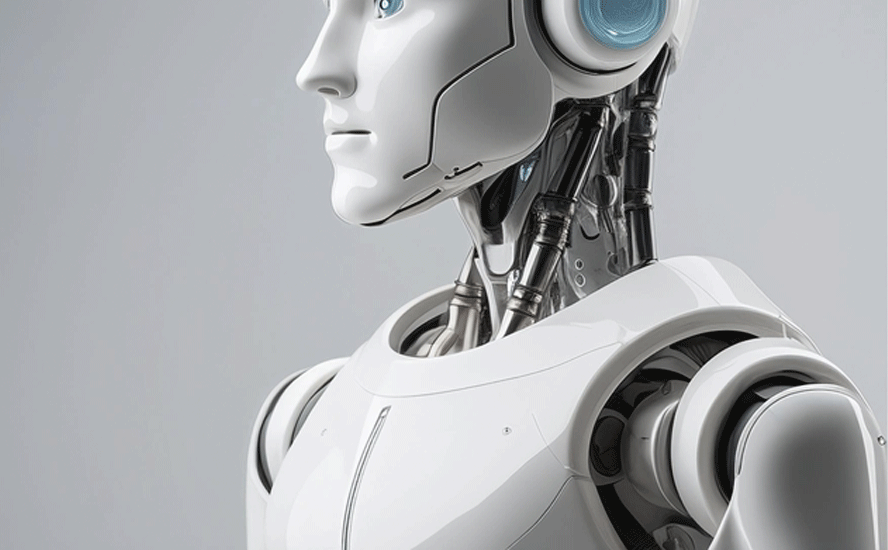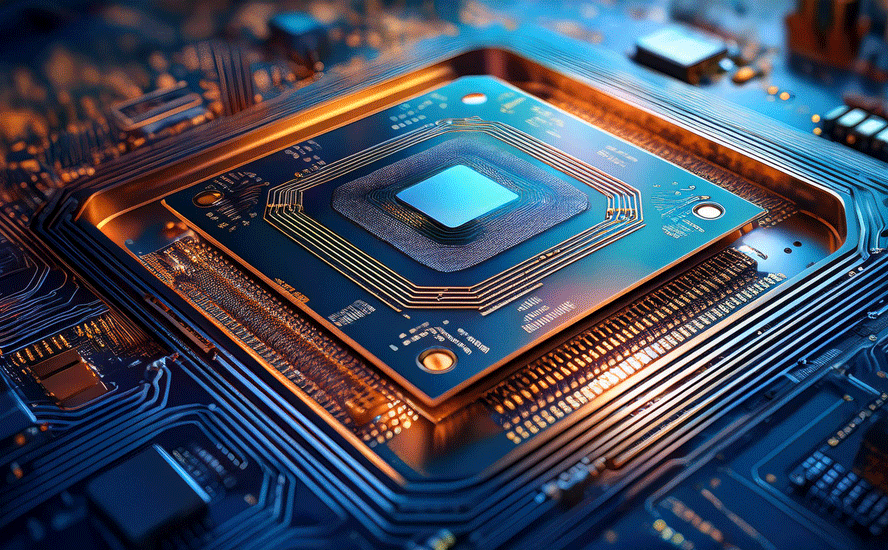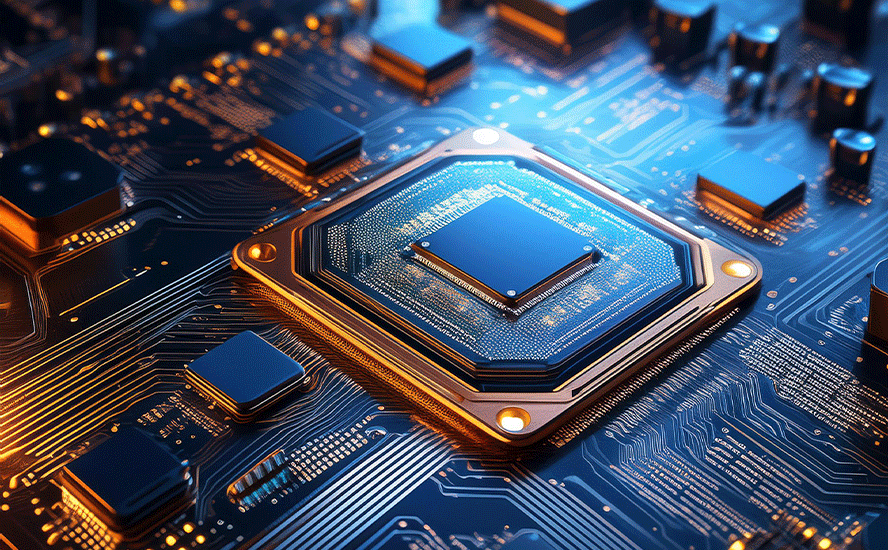NexOptic at forefront of AI revolution during uncertain times
2020.10.22
There is no shortage of prediction about how Artificial Intelligence (AI) will change our world in the future.
One thing remains for certain: more industries will grow increasingly reliant on the ability of “machines” to tackle or even prevent problems that may take humans eternities to solve.
As we speak, states, firms and consumers are all using AI in some shape or form to make critical decisions, and they will keep doing so as the technology continues to be optimized.
Many would also agree that AI is moving away from an early stage of adoption and into actual value creation. Perhaps only AI itself knows the extent of its growth and upside, but the room to grow is undoubtedly there.
Grand View Research reported that the global AI market was valued at U$39.9 billion last year and is expected to grow at a compound annual growth rate (CAGR) of 42.2% from 2020 to 2027.
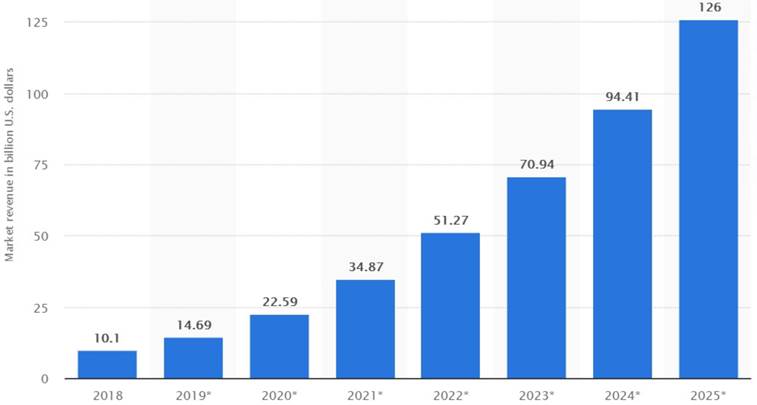
AI market
Revenues from AI software alone is expected to reach US$22.6 billion this year, according to Statista. That figure is set to increase more than five-fold in 2025 as a wider array of AI applications burst onto the scene.
A big reason why AI is seen by many as the catalyst for the next “industrial revolution” is that it can be applied in virtually every industry: retail, manufacturing, law and advertising. The list of AI applications is endless, and investment in the technology has yet to catch up to the rate of adoption.
Everything points to AI as the next “trillion-dollar industry”.
Navigating the Pandemic with AI
Unlike many sectors, AI does not depend on the state of the global economy. As states and businesses become crippled by the COVID-19 pandemic, we have grown to be more reliant on this technology than ever before as human contacts need to be minimized.
In the medical sector, this technological reliance is becoming even more apparent as innovators look for ways to streamline and optimize the entire COVID-19 diagnosis and treatment process. With AI, it is now possible to properly screen and track patients, analyze data, and make early predictions that would help contain the next virus outbreak.
Healthcare will also benefit from AI and its precision in imaging, which has been a largely untapped segment for AI applications.
One company that is looking to bring AI into image processing is NexOptic Technology Corp. (TSXV: NXO) (OTCQB: NXOPF) (FSE: E3O1), whose image processing technology epitomizes the potential of AI during these uncertain times and is set to benefit from the uptrend of AI adoption.
NexOptic ALIIS — Intelligent Imaging
Short for All Light Intelligent Imaging Solution, ALIIS is essentially a “neural network” that can embed itself into virtually any image sensor and can be integrated into a variety of platforms or devices.
Functionally, ALIIS is able to correct any image and video captured using sensors. To do this, it learns the textures, lighting and patterns of hundreds and thousands of example images and stores the information in its vast neural network, thus creating a virtuous cycle of a constantly improving image enhancement system.
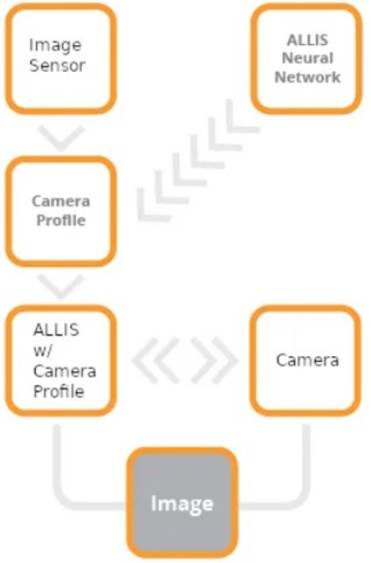
How ALIIS works
“It’s at the absolute cutting-edge of artificial intelligence,” NexOptic CEO Rich Geruson said in a recent interview with Ahead of the Herd when introducing his company’s technology.
In fact, it could even be considered a “foundational artificial intelligence platform,” said Geruson, who previously held executive positions at Nokia, IBM, Toshiba and McKinsey & Co.
Like all revolutionary AI technologies, NexOptic’s ALIIS leverages the power of machine learning to enhance images along a variety of dimensions.
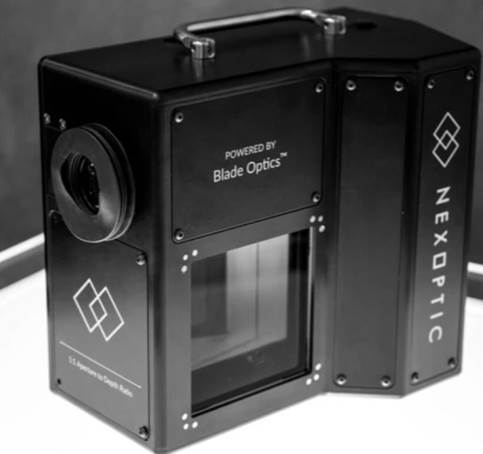
NexOptic’s proof-of-concept prototype
Firstly, and perhaps most importantly, ALIIS radically improves low-light performance, allowing users to see images and videos under extreme low-light conditions. ALIIS also uses visible light to capture colour and texture that other technologies cannot, as they do not employ the visible spectrum.
Secondly, ALIIS dramatically reduces motion blur, which is critical when viewing moving images.
Thirdly, for viewing images at a distance, ALIIS enhances image stabilization by allowing faster shutter speeds.
Lastly, ALIIS significantly reduces the file and bandwidth requirements for storage and streaming, which Geruson says from his experience has “enormous value” to a variety of high-growth market segments.
In addition to these end-user benefits, there are several production benefits offered by ALIIS since it enables optics that are more compact, lighter weight and lower cost.
New Features
Similar to how AI constantly learns and refines its process, NexOptic will continue to develop new features to improve its product.
New features added to ALIIS include a high-speed anti-glare offering as well as a neural ISP (Image Signal Processor) technology.
The anti-glare offering is built just for Aliis and works on images and video; it’s processed on the device and in real time, and it’s easily tuned for creating artistic videos and photographs. It is also useful when precision medical images are required.
As mentioned earlier, AI is set to play a big role in the global healthcare industry while we wait on a vaccine for COVID-19. In August, the National Institutes of Health launched the Medical Imaging and Data Resource Center (MIDRC), marking the start of an ambitious effort to utilize AI in medical imaging to fight the coronavirus.
The other new feature — the neural ISP technology — leverages the speed and efficiency of what has become known as AI accelerators.
ISP is a traditional technology that manipulates images from raw data into the precise and coherent imagery that we are accustomed to seeing. Now they are increasingly being used for new application paths in robotics, smart cities, industrial automation, automotives, healthcare and beyond.
NexOptic’s ISP seamlessly delivers this technology into the world of AI for the first time. This offering is also immediately available to OEM customers through its alliances with semiconductor companies.
Partnership Networks
NexOptic has formed partnerships with two of the biggest semiconductor companies in the world — NVIDIA and Qualcomm — which have a combined current market capitalization of over US$500 billion.
As part of the NVIDIA partner network, NexOptic is looking to leverage NVIDIA’s Jetson platform with NexOptic’s AI.
In a recent interview, Geruson stressed the importance of this partnership, explaining that Jetson’s high-compute, memory and floating-point capabilities would allow NexOptic’s algorithms to run even faster. “This will likely unlock new applications in robotics, smart cities, industrial automation, healthcare, and other high-growth areas.”
The rate of adoption of NexOptic’s AI will also significantly increase with the Qualcomm partnership.
NexOptic is currently one of the very limited number of platform solution ecosystem members in Qualcomm’s advantage network.
“With this exclusive membership, the company can gain access to and participation in Qualcomm’s global marketing initiatives and business development opportunities, not to mention the collaboration between group members,” Geruson told AOTH.
Asia-Pacific Expansion
Aside from leveraging partnerships in North America, NexOptic has also set its eyes on one of the highest-growth regions in the world: Asia-Pacific. Its AI market is projected to grow at a CAGR of 41.60% from 2019-2017 based on figures from Inkwood Research.
In September, the company expanded its AI footprint into Korea by opening an office in the capital city Seoul, opening up business opportunities with leading OEMs in the local market.
Additionally, NexOptic will look to explore opportunities for the siliconization of its algorithms – embedding AI directly onto a chip – for sales into entirely new market verticals. According to the company, siliconized AI represents a “huge future opportunity” by making NexOptic’s technology commercially viable for an untapped segment of the electronics industry.
Regionally, South Korea is one of the few global hubs of siliconized semiconductor supply chains along with China and Taiwan.
Conclusion
NexOptic’s ALIIS is already applicable to multiple technology sectors — everything from smartphones, precision manufacturing, security applications, smart cities, drones, satellites, autonomous vehicles, facial recognition, object detection and many more.

AI end use
“It really has the potential of becoming a foundational artificial intelligence layer in many of tomorrow’s imaging platforms,” chairman Geruson said. “For example, our recently created AI that transforms images signal processors … that’s an entire industry that we can disrupt. In fact, we just filed a new patent on this.”
According to McKinsey & Co., there is a 25% year-over-year increase in the use of AI in standard business processes. These will multiply as companies like NexOptic discover more and more novel AI applications in new market segments.
As Geruson mentioned, this may take years of hard work.
“Now, some of our biggest challenges are behind us, and we’re becoming progressively more de-risked,” he said.
Richard (Rick) Mills
aheadoftheherd.com
subscribe to my free newsletter
Ahead of the Herd Facebook
Legal Notice / Disclaimer
Ahead of the Herd newsletter, aheadoftheherd.com, hereafter known as AOTH.
Please read the entire Disclaimer carefully before you use this website or read the newsletter. If you do not agree to all the AOTH/Richard Mills Disclaimer, do not access/read this website/newsletter/article, or any of its pages. By reading/using this AOTH/Richard Mills website/newsletter/article, and whether or not you actually read this Disclaimer, you are deemed to have accepted it.
Any AOTH/Richard Mills document is not, and should not be, construed as an offer to sell or the solicitation of an offer to purchase or subscribe for any investment.
AOTH/Richard Mills has based this document on information obtained from sources he believes to be reliable but which has not been independently verified. AOTH/Richard Mills makes no guarantee, representation or warranty and accepts no responsibility or liability as to its accuracy or completeness. Expressions of opinion are those of AOTH/Richard Mills only and are subject to change without notice. AOTH/Richard Mills assumes no warranty, liability or guarantee for the current relevance, correctness or completeness of any information provided within this Report and will not be held liable for the consequence of reliance upon any opinion or statement contained herein or any omission. Furthermore, AOTH/Richard Mills assumes no liability for any direct or indirect loss or damage or, in particular, for lost profit, which you may incur as a result of the use and existence of the information provided within this AOTH/Richard Mills Report.
AOTH/Richard Mills is not a registered broker/financial advisor and does not hold any licenses. These are solely personal thoughts and opinions about finance and/or investments – no information posted on this site is to be considered investment advice or a recommendation to do anything involving finance or money aside from performing your own due diligence and consulting with your personal registered broker/financial advisor. You agree that by reading AOTH/Richard Mills articles, you are acting at your OWN RISK. In no event should AOTH/Richard Mills liable for any direct or indirect trading losses caused by any information contained in AOTH/Richard Mills articles. Information in AOTH/Richard Mills articles is not an offer to sell or a solicitation of an offer to buy any security. AOTH/Richard Mills is not suggesting the transacting of any financial instruments but does suggest consulting your own registered broker/financial advisor with regards to any such transactions
Legal Notice / Disclaimer
Ahead of the Herd newsletter, aheadoftheherd.com, hereafter known as AOTH.Please read the entire Disclaimer carefully before you use this website or read the newsletter. If you do not agree to all the AOTH/Richard Mills Disclaimer, do not access/read this website/newsletter/article, or any of its pages. By reading/using this AOTH/Richard Mills website/newsletter/article, and whether you actually read this Disclaimer, you are deemed to have accepted it.



